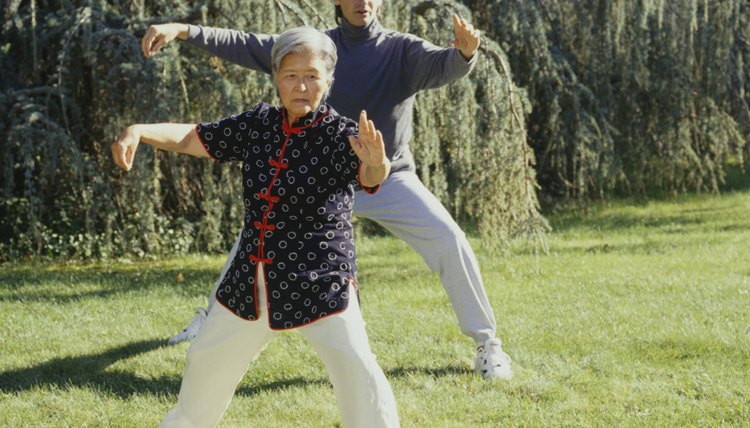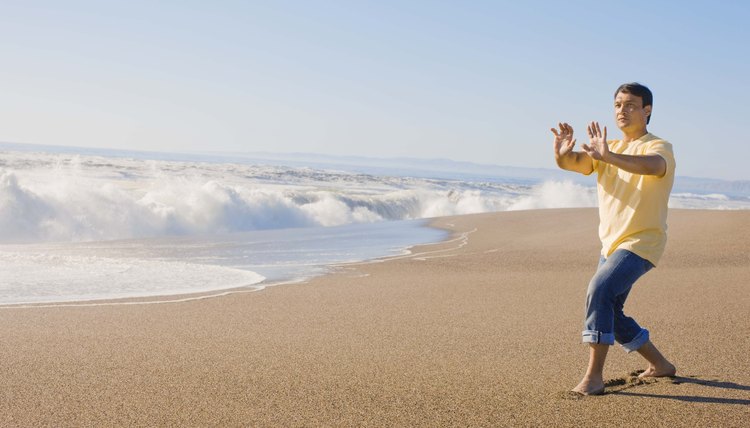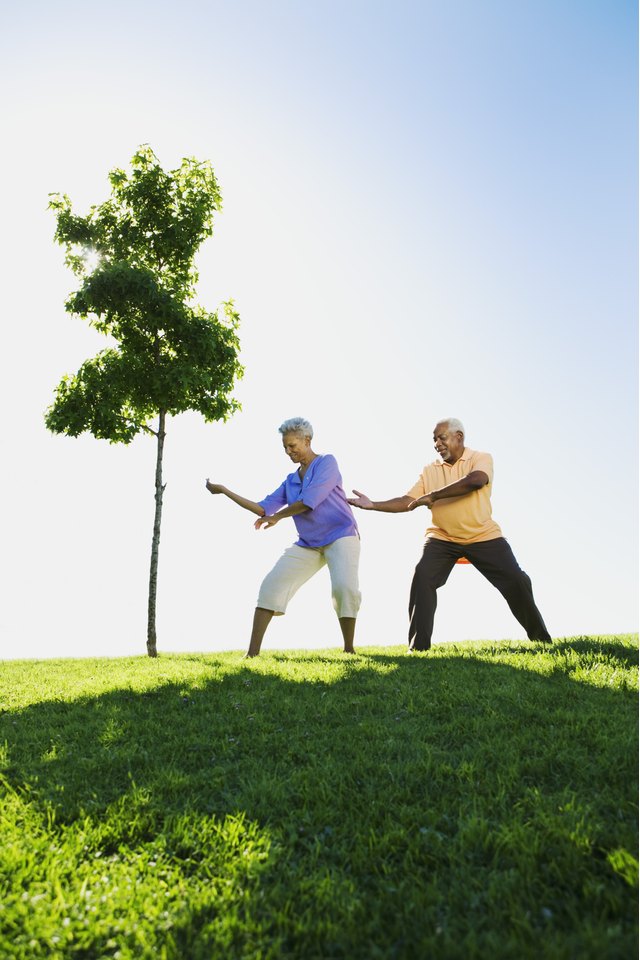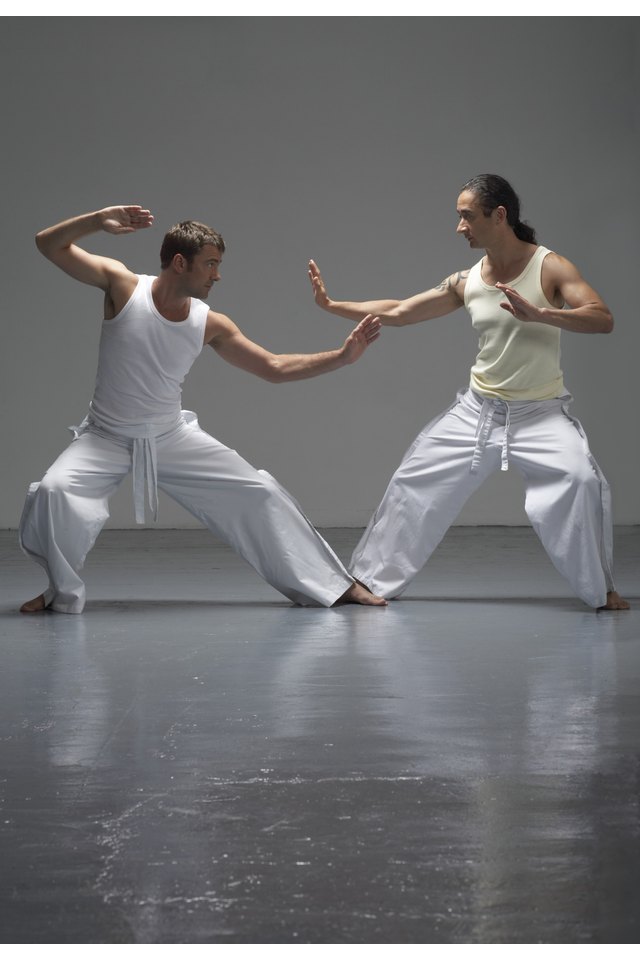Ba Gua Vs. Tai Chi

Ba gua, also called bagua and baguazhang, is a Chinese internal martial art like tai chi, or tai chi chuan. This means the emphasis is on merging the mind and body together to achieve an awakening. Instead of implementing lots of jumps and kicks, the focus is on stability, balance, breathing and controlling chi, which is the Chinese word for energy. There are several similarities between ba gua and tai chi and also some distinct differences.
History
The history of Chinese martial arts was passed down through the generations orally rather than being written down, so the truth isn’t entirely clear. Nobody really knows who created ba gua, which means “eight diagram palm,” but it was first written about in the 17th century Qing dynasty. Some people say tai chi, which means “grand ultimate fist,” was developed by a Shaolin monk named Chang San-feng around the turn of the 14th century, but others say he was a myth. What we do know is that both arts developed several styles and have now been practiced for hundreds of years. While originally a fighting art, tai chi has developed into more of a moving meditation. However, ba gua is used to this day by police and bodyguards in China because it’s a very efficient defense against multiple attackers.
Movements

Duncan Smith/Photodisc/Getty Images
Tai chi is known for its soft, fluid dance-like motions that are done while the practitioner stays pretty much stationary. The movements are based on blocks, strikes and takedowns from tai chi’s combat roots, but to the casual observer a tai chi demonstration does not look the least bit aggressive. Ba gua, on the other hand, requires plenty of traveling, as practitioners move in circular and spiral patterns that can be very tight or up to 30 feet in diameter. The purpose of this is to evade attack by moving out of its way. Ba gua sometimes features soft motion like tai chi, but incorporates much more hard force as well; an evading circle is often combined with a complicated and deadly hand strike for an on-the-move defense.
Speed

Duncan Smith/Photodisc/Getty Images
While tai chi is typically practiced at a very slow speed, ba gua is much faster. Ba gua's circular stepping patterns are often quite rapid and accompanied by an elaborate weaving in and out of the area of combat. The signature open-handed palm strikes are also very vigorous and potentially debilitating. Ba gua tends to appeal to people who are more athletic, while tai chi appeals to those looking to reduce stress and anxiety.
Energy

Duncan Smith/Photodisc/Getty Images
Ba gua and tai chi are like complementary and synergistic opposites in the internal martial arts family. Tai chi is based on extremely soft feminine “yin” energy, while ba gua embodies the strength of masculine “yang” energy. And yet, tai chi’s yin has a strong core, and ba gua’s yang is relaxed and without aggression or anger. Ba gua gets its power and effectiveness from potential energy, which comes from the coiling and uncoiling movements of both the foot movements and the hand strikes. Both put great emphasis on controlling the breath and directing chi energy where it needs to go to be most effective.
References
- Bagua Mastery: Similarities and Differences of Bagua and Tai Chi
- Tai Chi Master: Mastering the Art of Bagua Zhang
- YMAA: The History of Baguazhang
- Stanford University: A History of Tai Chi Chuan
- Do Tai Chi: History of Tai Chi Chuan
- MayoClinic.com: Tai Chi — A Gentle Way to Fight Stress
- Clear’s Tai Chi: Tai Chi Chuan, Bagua & Hsing-I
- Martial Tai Chi: Baguazhang
- Taiji World: Advanced Tai Chi and Baguazhang
- Chi Arts: Essentials of the Internal Martial Arts
Resources
Writer Bio
Heather Vale is a writer, interviewer and seasoned journalist. She has authored news, entertainment and informational programming in TV, radio, print and online media. She is also a certified childhood fitness and nutrition specialist with a background in mind-body-spirit health, self-help, business, technology and pet breeding. Vale holds a Bachelor of Fine Arts in visual arts from York University.
